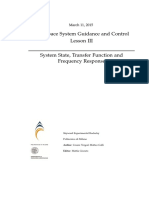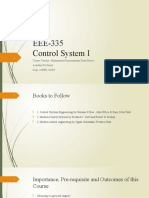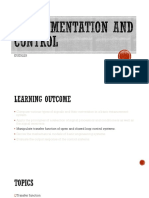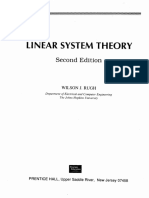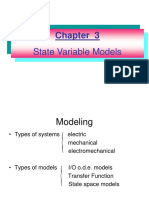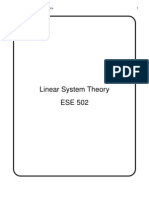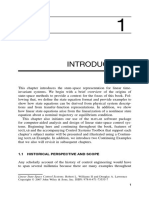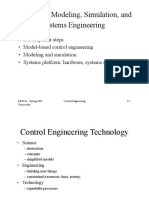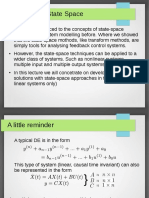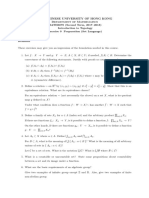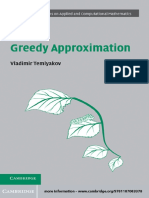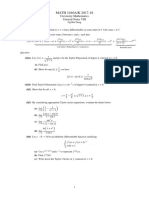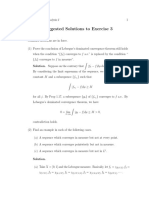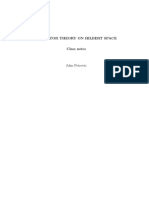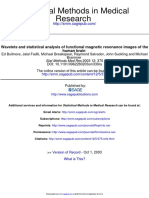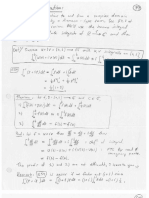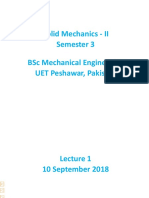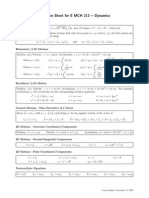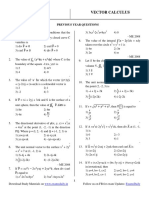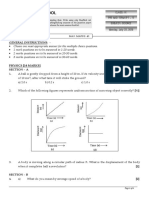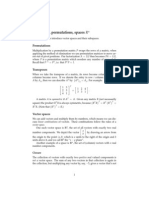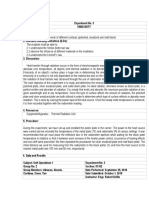0% found this document useful (0 votes)
76 views36 pagesLecture2 LinearSystems
The document discusses linear systems modeling. It introduces state space models, transfer functions, and linearization for continuous-time systems analysis in the frequency domain. It then focuses on linear time-invariant state space models, describing how to simulate state evolution and outputs over time using matrix exponentials. Eigenvalue analysis can determine stability of linear autonomous systems. Black-box input-output models are also introduced using convolution integrals and impulse responses.
Uploaded by
Omonda NiiCopyright
© © All Rights Reserved
We take content rights seriously. If you suspect this is your content, claim it here.
Available Formats
Download as PDF, TXT or read online on Scribd
0% found this document useful (0 votes)
76 views36 pagesLecture2 LinearSystems
The document discusses linear systems modeling. It introduces state space models, transfer functions, and linearization for continuous-time systems analysis in the frequency domain. It then focuses on linear time-invariant state space models, describing how to simulate state evolution and outputs over time using matrix exponentials. Eigenvalue analysis can determine stability of linear autonomous systems. Black-box input-output models are also introduced using convolution integrals and impulse responses.
Uploaded by
Omonda NiiCopyright
© © All Rights Reserved
We take content rights seriously. If you suspect this is your content, claim it here.
Available Formats
Download as PDF, TXT or read online on Scribd
/ 36




